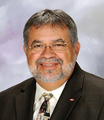When ‘mega’ goes ‘GIGA’—A discussion on the Sadara petrochemical complex
After the Engineering Construction Contracting (ECC) association’s 2017
Ayoub: What are the big takeaways you would give to a young engineer, as well as to engineering, procurement and construction (EPC) companies and owners/operators, that you learned from working on a mega-project like Sadara?
Brewer: Sadara was always envisioned to be a very large program. The owners and investors wanted the project completed quickly; they wanted it as fast as they could get it, and that meant
Ayoub: From an industry perspective, we all struggle with relationships (e.g., owner and EPC), but you actually had much more experience with the relationship between two owners—Dow and Saudi Aramco. How were both large-scale owners able to work together?
Brewer: I think the first thing both parties had to do was acknowledge that we had very different corporate cultures. One is a publicly traded global chemical company. The other is the world’s largest oil
As soon as you tell your partner how good they are at what they do, they are then willing to work with you and to trust you. We had an excellent working relationship with Saudi Aramco. I like to say, and I’m proud to say, that there is no way Dow Chemical could have done Sadara without Saudi Aramco, and it is also equally true that Saudi Aramco could not have done Sadara without Dow Chemical. We needed each other. That is another natural force that helps people bridge their cultural gaps—bridge their communication gaps—because they recognize just how much they need each other.
Ayoub: Another unique aspect about Sadara is the organization that was built. Please explain the process since many do not understand the longevity of the project and managing careers on projects.
Brewer: When we approached this giga-scale project, we knew that we were starting a journey that was going to last nominally 10 yr. That is much longer than your typical large project. Often, professionals in our business want to sign up for a construction assignment for maybe 2 yr–3 yr. A process engineer thinks, “I can get on that project for 18 mos and I will be done.” Now, we were asking people to commit a very large, significant part of their lives and their careers. To manage that environment, two realities exist. First, you are going to experience turnover and attrition higher than a normal project. That has unique challenges, especially for new-member orientation, which must occur at a very robust level.
On the other hand, it is equally important that you do as much as you can to retain the talent that you have for the continuity of the project leadership. I think that with the Sadara experience, we worked hard at both. We had turnover, but at the same time, the leadership team was amazingly consistent throughout the entire project. I think that consistency is a testament to the pride that people took in their job, and the excitement they had in being able to work on a project that was precedent-setting—a once-in-a-career and once-in-a-lifetime opportunity—and we had many leaders and team members who had been on the project for 8 yr–10 yr. It was a great testament to the pride we took in our work and in the project.
Ayoub: How did you overcome challenges to starting up so many units in a short period of time?
Brewer: Starting up all these facilities in a very short window required staffing each unit’s operations team fully and sufficiently early on, not only to obtain in-depth
Ayoub: You (Brewer) have been with Dow Chemical for 37 yr. What advice would you give young engineers that are starting their careers?
Brewer: I think the first thing I would tell them is that this industry of designing and constructing the “built space”—whether that is chemical plants, industry, manufacturing or infrastructure—is an extremely exciting industry. We are the solution providers for what our communities need and what society needs. If we partner with those communities, they are going to get better because of what we design and what we build. To be part of that, to be on the front line of that work, you never do the same thing twice in a career. To me, that is superbly exciting.
Couple those aspects
Young engineers in this business have many opportunities. In this industry—in particular, the industry of designing and building the infrastructure and plants of our communities, such as chemical plants, manufacturing facilities, refineries, or hospitals and airports—you never do the same thing twice, and you can change the world around you. You can impact the communities in which you live and, at the same time, become a global person. Participation in professional societies and organizations allows collaboration with professionals across different companies and different industries. This allows you to become aware of new technologies and methodologies, to gain the excitement of sharing what you are doing on your job, and to learn from others in the industry. It is a great way to invest in yourself, and a great way to have an amazing career.








Comments